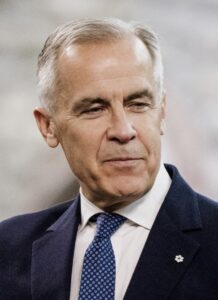Mark Carney was elected on April 28, and we are still in the early stages of his prime ministership. He was elected on the mandate of fighting Trump and rebuilding Canada’s economic independence, a mandate that’s hard to judge him on with such a small sample size, although some will try.
Carney’s political opponents are still dealing with the aftermath of the last election. Conservative leader Pierre Poilievre has returned to the House of Commons, but questions remain about whether he is the right person to lead the Conservatives into the next election or if he is only effective as an opposition politician. The NDP is in disarray, having lost official party status and direction, as Jagmeet Singh’s departure has left the party without a clear identity. The Bloc Québécois seems to be dodging political relevance like it owes it money, given the lack of headlines it has generated.

With all that in mind, it begs the question: is Carney his own political opponent? Simply put, yes. Carney has not only the promises he made during the campaign such as negotiating tough with the US, establishing closer ties with other trading partners, and building more infrastructure at home but also a past as both a banker (former head of the Bank of Canada and the Bank of England) and an environmentalist. These three versions of Carney are all weighing on Carney the prime minister, and the effect they will have on him remains to be seen.
Let us start with the least complex, and arguably the most under-the-radar version of Carney: Carney the environmentalist. In Carney’s book Value(s): Building a Better World for All, which he wrote while serving as the UN Special Envoy for Climate Action and Finance, Environmentalist Carney discusses his stance on the environment. It goes without saying that Carney believes in human-caused climate change (as most people do, myself included). However, how Environmentalist Carney believed we should fight the climate crisis may surprise some.
In the book, Carney talks about how Canada’s carbon tax is a policy that other countries should follow. That makes it somewhat ironic that one of his first moves as prime minister was to remove the federal price on carbon. He also discussed the government’s role in solving the climate crisis. In his view, the government should support industry-led innovation by providing subsidies for technological advancement. Environmentalist Carney stated that this was already happening and that investors were reacting accordingly.
Carney the prime minister, however, seems to have moved away from those ideas. His “nation building” projects include an expansion of a liquefied natural gas (LNG) refinery. This is not to say that Environmentalist Carney is dead, as another project announced was a nuclear power plant, but funding an LNG refinery sends mixed messages to industry and investors. How Environmentalist Carney affects prime minister Carney remains to be seen. With little pressure from the left, and the NDP unable to apply meaningful opposition in its current predicament, the future of environmental sustainability in Canada under this government is up in the air.
Carney’s history as a banker is well known and was one of the factors that helped the Liberals win the last election under his leadership. However, his time as the head of major financial institutions will also have an impact on how Carney governs, how the public judges him, and how his political opponents attack him.
As head of the Bank of England, Banker Carney sought lower interest rates to stimulate growth after the UK’s economy slowed. This was part of a government strategy at the time to cut public spending and curb national debt, an issue Canada is also facing today. These austerity policies are now viewed as largely unsuccessful, as they seemed to only kick the problem down the road. The current UK government blames these measures for a stagnant economy. Carney left his position as head of the Bank of England just before COVID and went to work in the private sector, marking the end of Banker Carney in England.
Today, a similar strategy that Carney helped enact in the UK appears to be taking shape under his watch in Canada. Carney has promised to cut public spending by 32.5 percent over the next four years. What that will look like exactly is unclear, but cuts to public service have already been announced. Reductions to Indigenous services and government grants to non-profits and the arts are likely to follow. This fiscal conservatism marks a major shift for a party that not long ago introduced public dental care and child-care programs.
Banker Carney also led the UK through the financial aftermath of Brexit. During the lead-up to the vote, he contributed to what pro-Brexit campaigners dubbed “Project Fear”—Carney’s warnings that leaving the EU would lead to a UK recession. Those same campaigners later credited Project Fear as one of the reasons the Leave campaign succeeded. That episode shows that Carney is not the high-minded intellectual who “doesn’t play politics,” as he styled himself during his campaign for prime minister.
Banker Carney will likely reappear as he acts more like a central banker than a traditional prime minister, focusing on results over social impact. He may also be swayed by public opinion rather than by conviction and based on the small sample size we’ve seen, that seems likely.
The third and final version is Carney the campaigner. During his run for prime minister, he made sweeping promises as Liberal leader. The list is long, but four stand out. The first is the “elbows up” tough negotiating with the US and Trump. The second is “nation building” massive federal infrastructure investment to stimulate the economy and modernize Canada. The third is diversifying Canada’s trading partners to reduce reliance on the US. And the fourth is increasing military spending to meet NATO’s two-percent-of-GDP requirement.
Each of these promises is ambitious enough to occupy an entire term, but Carney promised to do them all within his first four years. Some are already in motion: Carney has announced his “nation building” projects, but it’s too early to judge their success. On the other hand, “elbows up” has turned out to be more rhetoric than reality, as Carney has softened his negotiating approach toward Trump. Whether that’s the right strategy is up for debate, but it’s fair to say that “elbows up” is a broken promise. The third and fourth promises of trade diversification and military investment remain unresolved, with no major actions yet taken. We’ll have to wait and see if they’re fulfilled or end up in the broken column. For now, Carney’s record on keeping campaign promises is mixed, and it’s not a great start.
These three versions of Carney—the environmentalist, the banker, and the campaigner—are also prime minister Carney’s greatest foes. While Poilievre and the Conservatives will score easy wins in question period, the real test for Carney will be follow-through: keeping his promises, clarifying his environmental stance, and proving whether he’s truly the results-based leader he claimed to be.
As it stands right now, the way forward seems mostly clear for Carney, with his only real opponent being himself.
